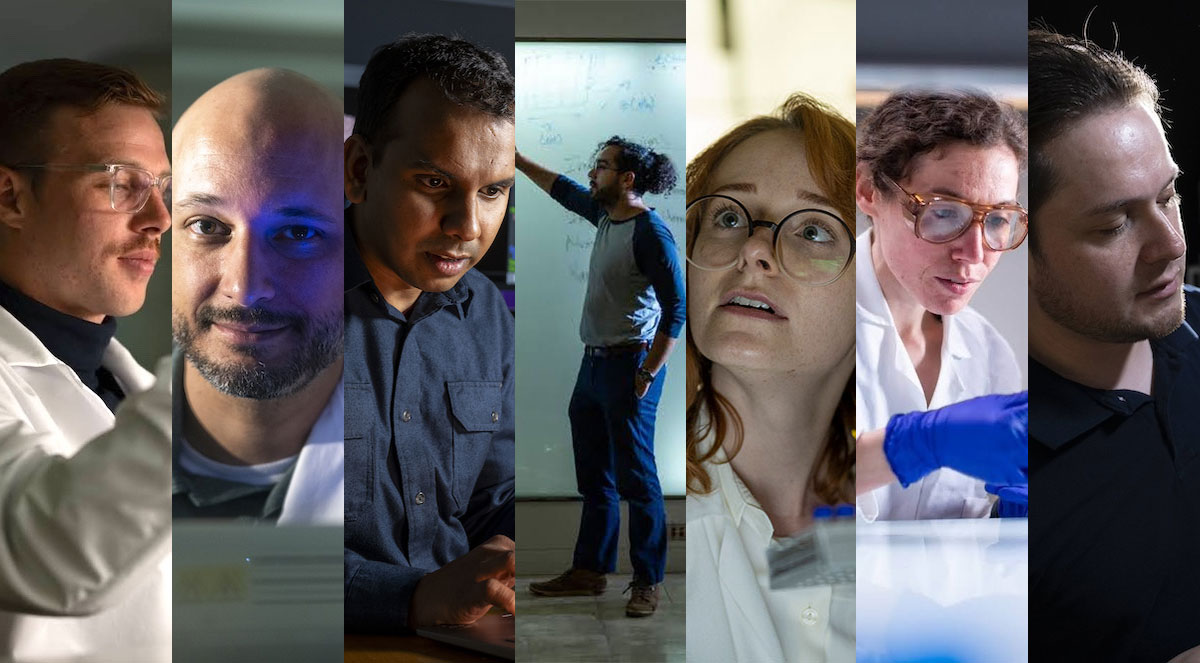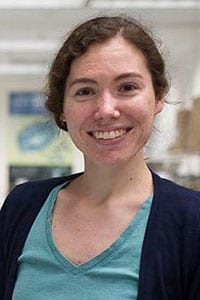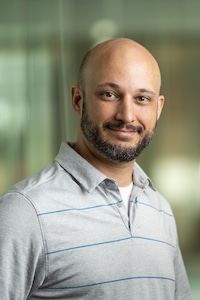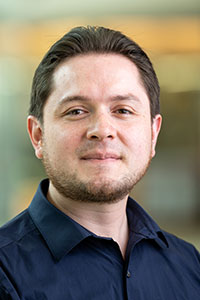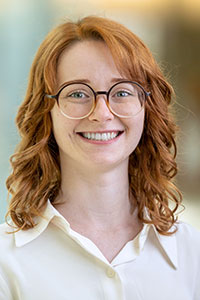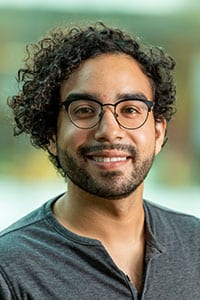The recent announcement of a multi-billion-dollar cut to institutions supported by the National Institutes of Health (NIH), currently under federal court review, has placed scrutiny on the operational costs of doing research, or so-called indirect costs.
What is often underrepresented in the discussion is the support NIH provides to early-career scientists, such as graduate students and postdocs, who are the key building blocks that have helped make — and keep — the United States the world leader in science. While performing a great deal of work on current projects, they also are honing their skills and expertise to become the next scientific leaders.
Early-career scientists are essential to the Morgridge mission, and the majority have some level of competitive support from NIH. Here, early-career researchers share thoughts on how federal funding supports their mission to conduct high-impact research.
Katherine Overmyer
Metabolism
Katie Overmyer is the associate director of the Lab for Biomolecular Mass Spectrometry led by the Josh Coon Lab. She manages the day-to-day operations of the lab, which applies cutting-edge mass spectrometry research to important biological questions. These big questions often require big experimental setups resulting in big data sets — a scale that is important to understanding the implications for health and disease. As leaders in their field, Overmyer says that cuts to federal funding will limit resources, resulting in less meaningful impact to the scientific community. “It doesn’t make sense from a workforce perspective and it doesn’t make sense from a ‘we want America to be really leading and cutting edge’ perspective,” she says. “We’re going to be limited on how much we can do, and the pace at which we improve our technology will drop off.” This will stall and even prevent insights into cancer, heart disease, diabetes, and Alzheimer’s, to name just some of the diseases Coon Lab technology addresses.
The lab supports collaborators across the nation on projects involving metabolism and biomarker discovery in human and basic science studies. Overmyer says they are constantly developing new tools and methods to make data collection more efficient. “We’re trying to make our research resources stretch as far as we can, we’re not wasteful,” she says. “And the efforts that we’re doing on technology development is also to allow other people to stretch their resources — that’s a beneficial thing, not just for us, but for many labs.”
Peter Ducos
Structural biology
-
U.S. Army veteran and graduate student Peter Ducos leans on his prior military training to solve complex problems and collaborate with other scientists. In the Tim Grant Lab, Ducos explores molecular structures in exquisite detail using advanced technologies in cryo-electron microscopy. This level of detail helps the lab and the scientific community understand how molecular machinery operates in bacteria and viruses, enabling their replication. But this exploration comes at a cost, as the idea of basic research is to make a discovery in order to advance science in a way that you can’t foresee. This requires taking risks and investing in the right tools and resources. “When you spend less, you’re going to get less science. That’s just how it is,” he says.
Ducos is part of the Science and Medicine Graduate Research Scholars (SciMed GRS) program at UW–Madison, which provides community resources and funding opportunities for underrepresented students. “In an inclusive society, where everyone is treated equally, it allows you to have that opportunity the same as somebody who’s next to you,” he says. “There are people starting from nothing, first-generation students, where it’s new territory.” Having to navigate this system along with mounting worries about implications of funding cuts puts strain on the scientific community, he says. “People don’t do the best work when they’re scared.”
Andrés Tibabuzo
Regenerative biology
Postdoc Fellow Andrés Tibabuzo works in the Newmark/Issigonis Lab to understand the biology of parasitic flatworms called schistosomes. Infection with these flatworms causes schistosomiasis, a tropical disease second only to malaria in global prevalence that affects over 200 million people every year. Driven by curiosity, Tibabuzo views his career as an opportunity to learn and adapt to be able to tackle any kind of problem. A native of Colombia, Tibabuzo worries about the impacts that federal funding cuts will have on the scientific community. “There’s a very high proportion of international students, grad students and postdocs, that are doing the work,” he says. “If there’s no way to pay for them, that’s going to have immigration implications. If that’s the case, then we’re going to lose a lot of talent.”
He adds that many U.S. entrepreneurs and companies have found success in biomedicine in because there has historically been support for high-risk, high-reward opportunities. There are always new discoveries to be made, but they might not happen without such opportunities. “We want to do the research, we want to follow our curiosity, and all of these things are distracting us from that,” he says. “Just as with basic research, we don’t know where this is going to lead. We’re going to be seeing the consequences of all the things that are happening right now, down the road.”
Raison Dsouza
Structural biology
-
Assistant Scientist Raison Dsouza develops new computational methods to analyze cryo-electron microscopy images in the Grant Lab. Dsouza compares the research landscape to Newton’s apple sparking an idea — anyone can have an idea, but it means nothing if no one tests it and builds on it. “If we remove funding, then all we have left is that you can just ponder about things,” he adds. “You’re stuck to your thoughts and so research basically becomes a fantasy in your head.” While he works on visualizing data from his computer console, those images need to be captured by the instruments housed at the UW–Madison’s Cryo-Electron Microscopy Research Center (CEMRC) supported by NIH funding. “It’s not even just buying the microscopes, it’s setting up, getting the engineers, getting the flooring done,” Dsouza explains. “So you have building costs that come in, room costs that come in, then the upkeep, and the contract.”
As an immigrant scientist, Dsouza notes how research in the U.S. is not burdened by the bureaucracy that exists in other countries, like his experience in India. “We’ve seen historically that by letting different groups follow different research goals — exploratory research — we’re able to reach a conclusion on a hypothesis,” he says. “Taxpayer-funded research adds to the plethora of knowledge that is available to the public. The way it was designed, it should be the power of the people.”
Kim Huggler
Metabolism
Kim Huggler studies how environmental factors affect the metabolism and biology of cancer cells as a postdoc in the Jason Cantor Lab, where she also completed her graduate studies. She thrives on the new ideas that push the boundaries of knowledge as a collective scientific community. “What’s the point of doing science if you don’t share it?” she asks. “Everyone can benefit from the work, especially the work being paid for by US tax dollars. There’s no gatekeepers on these things.” Graduate students are key parts of laboratory research teams anywhere between four to seven years while they complete their program. The NIH investment helps support productive labs with the personnel to do the work. “I don’t think very many people would elect to come to graduate school without a stipend. It’s just too much of a barrier,” Huggler says. That translates to fewer, slower, and less impactful answers to the important questions about cancer that Huggler and the Cantor Lab are investigating.
Soon Huggler will start a clinical chemistry fellowship at Washington University in St. Louis, noting that her path through graduate school helped her avoid taking on the debt of medical school, since careers in clinical chemistry require an MD or PhD.
Ed Evans
Biomedical imaging
-
Morgridge alum Ed Evans uses his bioinformatics background to integrate machine learning technologies into ImageJ, a software platform developed by the NIH to analyze microscopic images. Evans began his work as a postdoctoral fellow with Moridge Investigator Kevin Eliceiri, who he continues to work with in the Laboratory for Optics and Computational Instrumentation (LOCI) at UW–Madison. Their maintenance and improvement of the ImageJ platform enables thousands of biomedical researchers to better analyze their data.
Without funding, Evans estimates it would easily set researchers back 10 years. “People say it’s open source, anyone can do it. No, they can’t. Not everyone knows how to deal with big data,” he explains.“It’s like firing your technician that’s working your crazy machine, you know? You have this machine, but how do you use it?”
Evans found his way to UW–Madison as a beneficiary of the NIH Maximizing Access to Research Careers program (MARC), which provided funding and mentorship on how to operate as a scientist. Despite the challenges posed by the science cuts, Evans approaches the uncertainty with cautious optimism. “To all the other scientists: what you’re doing is really, really, really important, and maybe it means you have to just push that as far as you can, for as long as you can, until you can’t anymore.”
Nick Arp
Metabolism
Nick Arp is an MD-PhD candidate in his sixth year of the University of Wisconsin School of Medicine and Public Health’s Medical Science Training Program. Currently, he is completing his graduate studies in the Jing Fan Lab, before returning to his final year in medical school. MD-PhDs play a special role in American healthcare, trained to provide direct medical care while also conducting research that improves patient care and leads to new treatments.
Arp’s research is focused on metabolism and immune cell function. His goal is building a foundation for understanding and controlling inflammation in both chronic autoimmune diseases and life-threatening conditions like sepsis. “We need a different variety of tools to go deeper into a specific part of the research,” he says. “We want to be able to have the flexibility of asking any scientific question.” While the lab is equipped with microscopes and a mass spectrometer, they take advantage of the access to resources on campus. Without funding to maintain and operate these facilities and instruments, their toolbox would be much more limited.
Support Morgridge
There’s never been a better time to support curiosity driven research. Give now to provide vital resources to improve human health.
